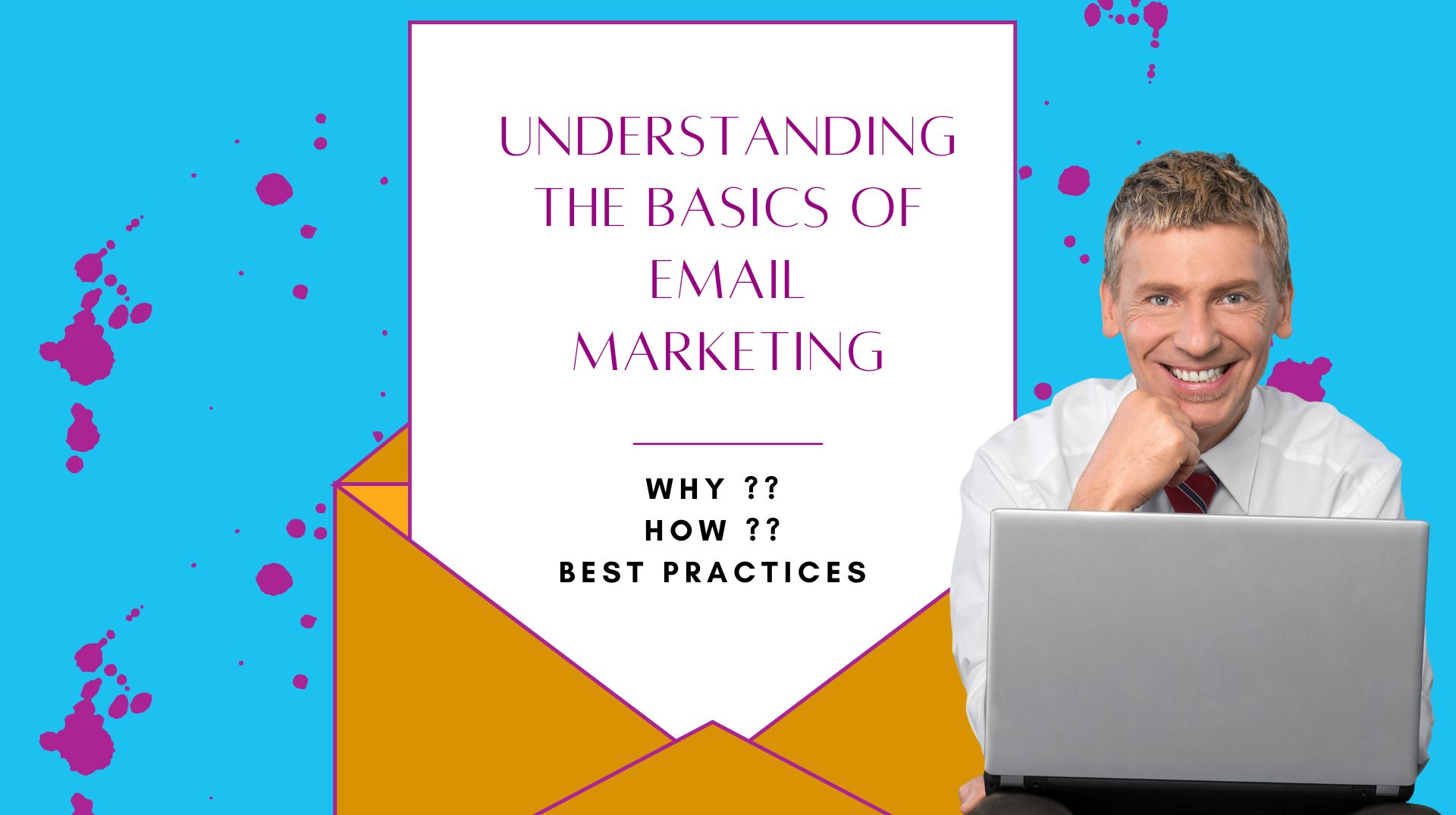
04 Mar Understanding the Basics of Email Marketing
Email marketing is a powerful and cost-effective marketing tool that can help businesses of all sizes connect with their customers and drive revenue. In this blog post, we’ll cover the basics of email marketing, including why it’s important, how it works, and best practices for success. We’ll also provide examples of successful email marketing campaigns to help you understand how to apply these principles to your own business.
Why is email marketing important?
Email marketing is important for several reasons:
- It’s cost-effective: Email marketing is one of the most cost-effective marketing strategies available. You can reach a large audience without spending a lot of money.
- It’s measurable: Email marketing allows you to track metrics such as open rates, click-through rates, and conversions. This allows you to measure the effectiveness of your campaigns and make data-driven decisions.
- It’s customizable: Email marketing allows you to personalize your messages based on the recipient’s interests, behaviors, and preferences. This makes your messages more relevant and engaging.
- It’s versatile: Email marketing can be used for a variety of purposes, including promoting products, nurturing leads, and building relationships with customers.
How does email marketing work?
Email marketing works by building a relationship with your audience over time. It’s a process of ongoing communication that involves several steps:
- Choose an email marketing service provider: The first step in email marketing is to choose an email marketing service provider. There are many providers to choose from, including Hummz, Mailchimp, Constant Contact, and Campaign Monitor. Consider factors such as pricing, ease of use, and features when choosing a provider.
- Build your email list: Your email list is the foundation of your email marketing campaign. Without a good email list, your campaigns will fall flat. There are many different ways to build your email list, including using lead magnets, offering incentives, and collecting email addresses at events.
- Segment your email list: Segmenting your email list allows you to send targeted messages to specific groups of people. This can improve your open rates and click-through rates.
- Create a campaign: Once you have your email list, it’s time to create your campaign. Your campaign should have a clear goal and message. Consider factors such as the subject line, the content, and the call-to-action when creating your campaign.
- Test and optimize: Testing and optimization are important for improving the performance of your email campaigns. You can use A/B testing to test different elements of your campaign, such as the subject line, content, and call-to-action. Use the data from your tests to optimize your campaigns and improve your results.
- Track your results: Tracking your results is important for understanding the effectiveness of your email campaigns. Use metrics such as open rate, click-through rate, and conversion rate to track your results. Use this data to make informed decisions about your campaigns and improve your results over time.
Best practices for email marketing
Email marketing is an effective and efficient way to connect with your audience, but it’s important to follow best practices to ensure your campaigns are successful. Here are some best practices to keep in mind:
- Build a permission-based email list: Only send emails to people who have given you permission to do so. This means obtaining consent through an opt-in form or another clear indication of consent. Not only is this good practice, but it also helps you avoid spam complaints and improve your deliverability.
- Use a clear and concise subject line: Your subject line is the first thing your subscribers see, so make it count. It should be clear and concise, giving your subscribers an idea of what your email is about and entice them to open it. Avoid using clickbait or misleading subject lines, as this can harm your credibility and lead to lower open rates.
- Personalize your emails: Personalizing your emails can increase engagement and improve your chances of converting subscribers into customers. Use your subscribers’ names and personalize your content based on their interests, behaviors, and preferences. This can include product recommendations, personalized offers, or targeted content.
- Use automation: Automation can help you save time and improve your results. Use automation to send welcome emails, abandoned cart reminders, and more. You can also use automation to trigger emails based on specific actions, such as a purchase or a download.
- Optimize for mobile: More and more people are checking their email on their mobile devices. Make sure your emails are optimized for mobile by using a responsive design that adapts to different screen sizes. This includes using larger fonts, shorter paragraphs, and mobile-friendly call-to-actions.
- Provide valuable content: Your subscribers have opted in to receive your emails because they are interested in what you have to offer. Make sure your content is valuable and relevant to their interests. This can include blog posts, videos, product updates, or exclusive offers.
- Test and optimize: Testing and optimization are important for improving the performance of your email campaigns. Use A/B testing to test different elements of your campaign, such as the subject line, content, and call-to-action. Use the data from your tests to optimize your campaigns and improve your results over time.
- Monitor and maintain your list: Keep your email list clean and up-to-date by monitoring it regularly. Remove inactive subscribers and clean up invalid email addresses. This can help improve your deliverability and reduce the risk of being marked as spam.
- Follow email regulations: There are laws and regulations governing email marketing, such as the CAN-SPAM Act in the United States and the GDPR in the European Union. Make sure you comply with these regulations, including providing a clear way for subscribers to opt-out of receiving your emails.
By following these best practices, you can create effective and engaging email campaigns that connect with your audience and drive results.


